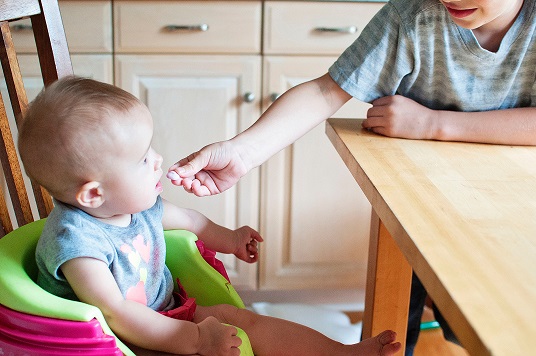
Hunger Signs
Getting to know your toddler and their signs will help you to know when they are hungry and when they are full.
Common signs of hunger
Your toddler will have their own way of telling you they are hungry; however, some common signs are: 
-
Getting excited when they see you getting food ready
-
Reaches or points to food
-
Uses hand motions or makes sounds to let you know they are hungry
-
Using words or short sentences. For example, “more”, “please”, “eat”
-
Showing quick changes in mood. If they are going from happy to cranky very quickly, they could be hungry
Daily changes to appetite
Your toddler’s appetite can change from day to day. Some days they will eat more than others. Let your toddler guide you as to how much they eat. Their change in appetite can be affected by:
-
Snacking between meals
-
Toddlers have small stomachs
-
Illness
-
Short attention spans for food
-
Growth spurts
-
Different activity levels during the day.
Let your toddler guide you as to how much they eat. Some signs that they are full might be: 
-
Turning their head away when offering them food
-
Losing interest and getting distracted
-
Pushing the spoon or plate away
-
Playing with their food, or throwing it on the ground
-
Using hand motions or sounds to let you know they are full
-
Keeping their mouth shut tightly
Offering meals at regular times can help you to predict when your child will get hungry next. Try to judge your toddler’s huger and appetite over a week rather than one single day. This will give you a better sign of how much they are eating.
Did you know?
Your child’s brain realises the tummy is full 20 minutes after they start eating so if they are a fast eater, they could eat more than they need. Ensure that you are offering the right types and amounts of food for your child’s age. The Australian Guide to Healthy Eating can help give more direction on portions.
If you are worried that your child is eating too much, try offering smaller portions on a smaller plate. Wait at least 20 minutes before offering a small second serving if they are still hungry.
If your child refuses part of a meal, for example vegetables, do not offer more of other foods such as meat. If your child isn’t eating much at mealtimes, you may need to consider the size and number of snacks between meals. You can also limit drinks before meals as this can make them feel full as well.
You may like to watch this video for more useful tips: Is my toddler eating enough?



